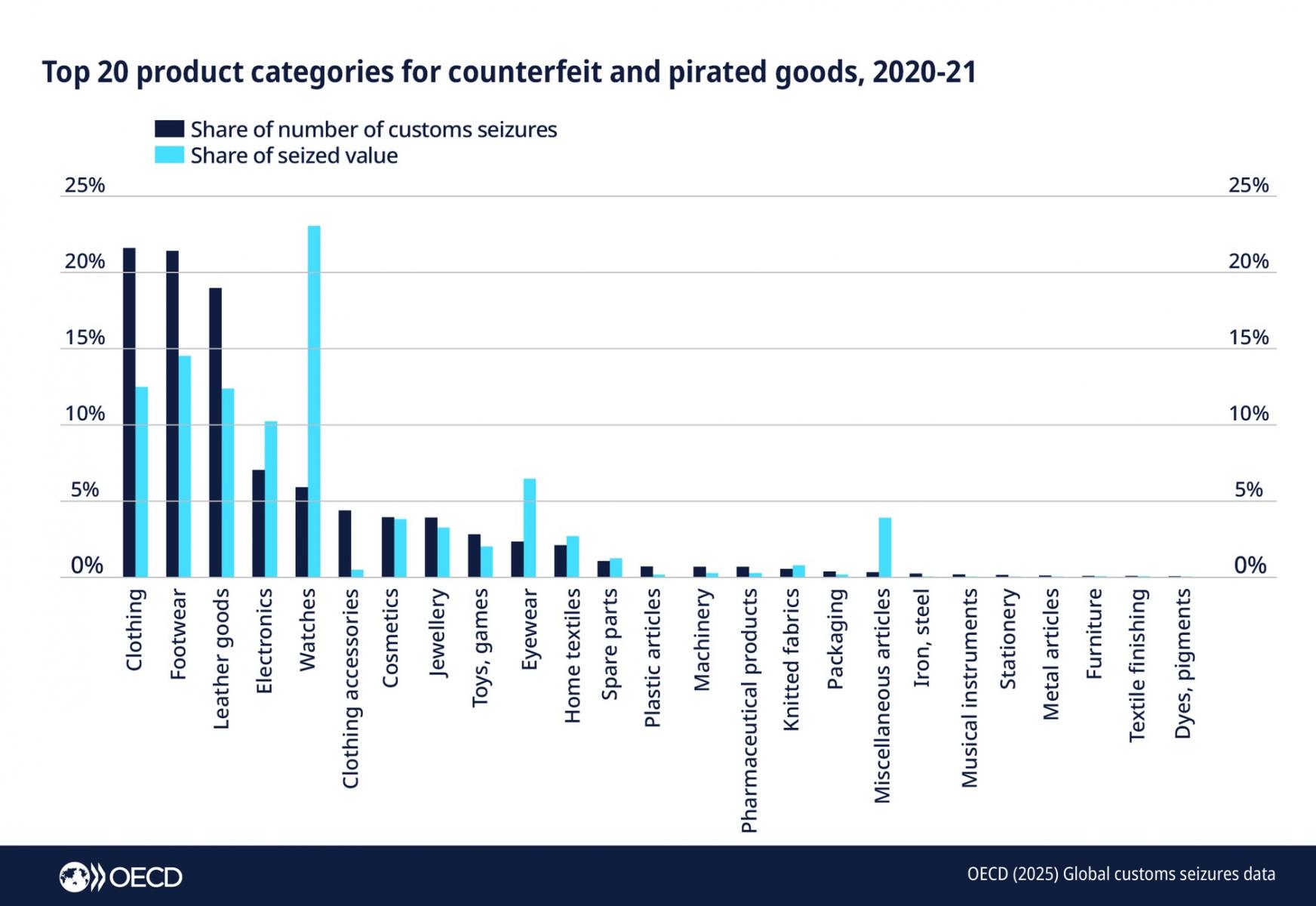Global trade in counterfeit goods reaches USD 467 billion
The global trade in counterfeit goods continues to pose significant risks to economies, consumers, and supply chains, according to a new report released by the Organisation for Economic Co-operation and Development (OECD) and the European Union Intellectual Property Office (EUIPO). The report estimates that counterfeit goods accounted for USD 467 billion in global trade in 2021, underscoring the scale and persistence of the problem.
The findings, published in Mapping Global Trade in Fakes 2025: Global Trends and Enforcement Challenges, mark the fourth joint study by the OECD and EUIPO. The report provides a detailed analysis of counterfeit trade patterns and offers recommendations to help policymakers safeguard consumers, protect legitimate businesses, and maintain the integrity of global trade.
According to the study, clothing, footwear, and leather goods remained the most targeted product categories, making up 62 percent of all counterfeit goods seized. However, counterfeiters are increasingly expanding their reach into a wider range of products that touch nearly every aspect of daily life. The report warns of the growing prevalence of hazardous counterfeit items, including automotive parts, medicines, cosmetics, toys, and food, which pose serious risks to consumer health and safety.
“Illicit trade threatens public safety, undermines intellectual property rights, and hampers economic growth, and the risks could increase as counterfeiters leverage new technologies and techniques to avoid detection,” said OECD Secretary-General Mathias Cormann. He emphasized the need for authorities to adopt new tools and enhance cooperation and information sharing to counter the evolving tactics of counterfeit networks.
The report identifies China as the leading source of counterfeit goods, accounting for 45 percent of all reported seizures in 2021. However, it also notes that counterfeit production and distribution involve a growing number of countries across Asia, the Middle East, and Latin America.
In addition to mapping the main sources, the report highlights changes in trade routes and distribution methods. Counterfeiters are increasingly exploiting international waterways and adopting localization strategies, such as shipping unassembled parts or packaging to be assembled closer to destination markets. This approach complicates detection and enforcement efforts.
Counterfeit networks are also adapting to consumer demand and market trends, quickly producing fake versions of popular products and using online platforms to advertise and sell them. The study reveals that around 65 percent of counterfeit seizures involve small parcels and mail, indicating a shift toward distribution channels that prioritize speed, convenience, and lower risk of inspection.
To address these challenges, the report calls for enhanced monitoring and a more coordinated global response. It recommends real-time information sharing among customs authorities, police forces, financial intelligence units, and market surveillance bodies. Stronger collaboration with trade intermediaries, postal and shipping services, free trade zones, and logistics firms is also essential to prevent the misuse of legitimate networks for illicit trade.
The OECD and EUIPO urge governments and industry stakeholders to work together to close enforcement gaps and to protect consumers and businesses from the growing threat of counterfeit goods infiltrating global markets.









